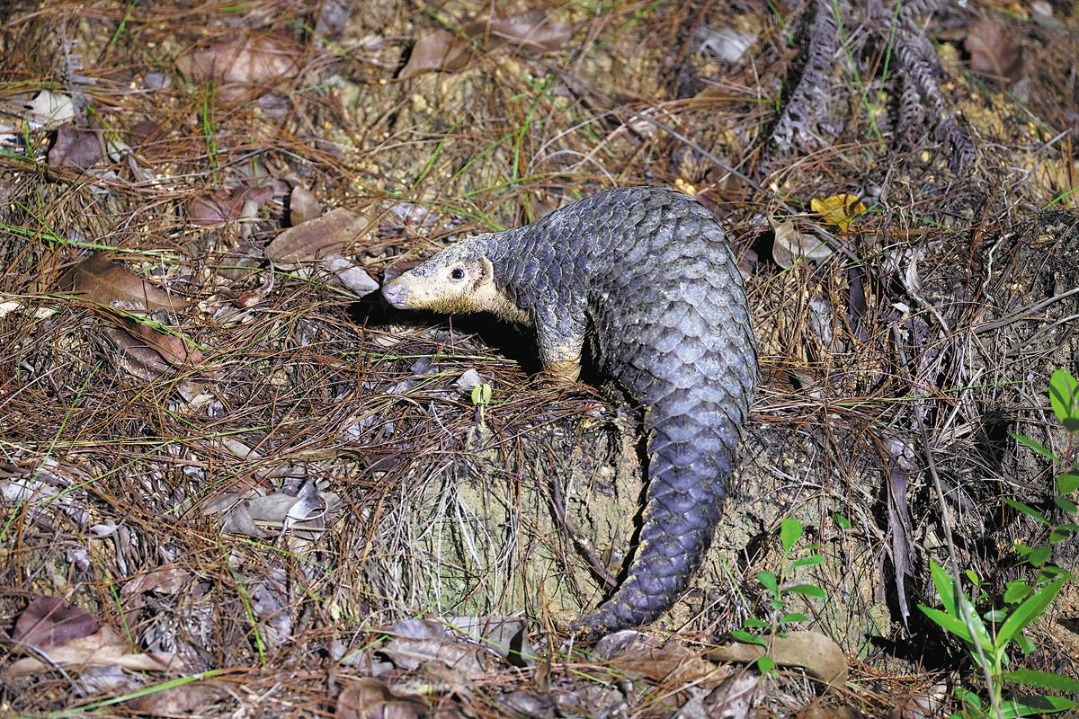Ferocious fish delicious dish


Editor's Note: Traditional and fusion cooking styles, regional and international ingredients and a new awareness of healthy eating are all factors contributing to an exciting time for Chinese cuisine. We explore the possibilities.
Our little village market has several vendors that sell live fish and prawns. Since we are far away from the coast and at least 2,000 meters above sea level, these are freshwater or farmed fish.
The most common offerings are the carp. The smaller carp are bony and tend to be deep-fried whole and cooked into a milky-white soup. They are also pickled in lots of chili and pounded ginger and enjoyed like salted fish.
The bigger carp, full of fat in the belly but just as bony, are cooked in a spicy hotpot using chili, Sichuan peppercorns and local ginger. The heavy spices get rid of any muddy taste.
But the stars are kept apart in shallow basins, the long sinuous snakeheads, or heiyu, simply known as black fish. They are freshwater, too, but unlike the carp, they are valued for their sweet, firm flesh that is relatively free of little bones.
The snakehead is an ancient fish, and they have been around since dinosaurs were still stomping around. That they are still prolific to this day speaks of their tenacity for life.
They live in the bottom of ponds and waterways, where they eat up anything that comes their way. Their omnivorous habits are famous, and they have been known to prey on other fish, prawns, snails, frogs, insects and even their own young.
They are very hard to kill and have a distressing habit of still wriggling around on the chopping board. For this reason, fishmongers usually stun them quickly with a hard whack on the head before cleaning them up.
They can survive out of water for a few days and are known to migrate over land to deeper waters if their own pond dries out.
It is this vitality that makes them so popular as a "superfood".
Snakehead is regarded as an excellent tonic for those recovering from illness. Caring relatives would cook snakehead fish soup for a recuperating patient to help their wounds heal faster.
In fact, some traditional Chinese medicine doctors tell patients not to eat snakehead immediately after operations in case it encourages the formation of raised scars, or keloids.
Snakehead meat is tight and firm and is filleted and sliced for stir-fries. Their meat glistens with a rainbow sheen when cooked, and they do not have the usual muskiness of most freshwater fish.
Because they are so hardy, they are farmed wherever Chinese communities congregate. Unfortunately, this has resulted in the snakehead becoming an invasive species in certain countries, and they are especially destructive considering their ferocious habits.
All I can say is, it is fortunate that the Chinese have equally ferocious appetites for snakehead and they are eaten all over China, from the southwestern provinces to the northeast.
The snakehead's firm texture makes it ideal for the strongly flavored stews beloved in the north. In the south, the fish is cooked in stir-fries, light soups and a host of other recipes.
My grandfather's favorite dish was a whole baby snakehead cut up into rough chunks and double-boiled with ginger juice and Chinese wine. The resulting milky broth had golden globules of oil floating on it, as the fish gave up its rendered fat in the long slow cooking.
Larger snakeheads are made into a special dish that was popular with the whole family. The collar and the tender belly cuts of the fish were first flash-fried and set aside.
The bones were also fried with lots of ginger and scallions and then boiling water was added.
Before long, a flavorful fish soup was ready. Tender young mustard greens and the fried fish chunks went back into the pot. Sometimes thick rice vermicelli noodles were added to make it a one-dish meal.
In our family, the snakehead slices were butterflied. Thick slices of the fillet were shaved into halves again, leaving the connecting skin.
These were first marinated with salt, pepper, cornstarch and a little Chinese wine. Then a pile of crisp green onions and ginger was prepared. Everything was then rapidly tossed over high heat for a classic stir-fry.
We also like snakehead slices blanched in a fish stock. It sounds simple enough, but it's a dramatic dish.
First you make the soup out of the fish bones and a chicken.
Wafer-thin slices of raw fish are then carefully laid out at the bottom of an attractive bowl. Sometimes, shredded lettuce or garland chrysanthemum shoots are added for color. By the side, there would be deep-fried shallots, youtiao croutons and fresh coriander leaves ready for garnish.
When everyone is assembled, the boiling soup would be poured into the bowl, instantly cooking the fish, and the slices would float up like huge snowflakes.
Of course, the Chinese are very good at making full use of nature's resources, but the problem occurs when they try to change nature, by bringing the snakehead to ecosystems where they don't belong.
Here are a few recipes to contain their numbers.
paulined@chinadaily.com.cn
Recipes
Ginger and scallion stir-fry
300 g fish fillets
6 slices ginger
2 stalks spring onions (scallions)
1 teaspoon cornstarch
4 tablespoons water
Salt, pepper, sesame oil
Thinly slice the fish fillets and add a few drops of oil and a little salt to marinate. Keep chilled.
Gently smack the ginger slices with a cleaver to release their juices.
Wash and cut the spring onions into 5-cm lengths. We will use both white and green parts.
Make a slurry with the cornstarch and water, and add salt, pepper and a little sesame oil.
Heat up one cup of oil in the frying pan to medium heat. Add the fish slices and gently stir to break them apart. As soon as they turn color, remove and set aside.
Pour off excess oil and return the pan to the fire. Fry ginger slices till fragrant. Turn up the heat and toss in spring onions, followed by the fish. Keep heat high as you toss the ingredients together. Be careful not to break up the fish slices. Season with salt and pepper.
Snakehead and daikon soup
1 snakehead, about 1 kg
1 large daikon or radish
5-cm piece of ginger
Sesame oil
Wolfberries
Salt and pepper
Chinese wine
Get the fishmonger to cut up the fish into large chunks. Rinse, drain and set aside. Marinate with a little salt and a spoonful of Chinese wine.
Peel and cut the daikon into large chunks. Parboil for five minutes.
Finely slice the peeled ginger and then cut into thin strips. Heat up some oil, and deep-fry the ginger julienne over gentle heat till it turns lightly golden. Remove the ginger strips and reserve.
Next, sear the fish chunks in the pan so they are evenly browned. Drain the excess oil, then add boiling water and the radish chunks and keep the pan at a rolling boil for another five minutes until the soup turns milky.
Turn down to a slow simmer and test if the radish has softened. As soon as you can poke a chopstick right through a piece, they are done.
Season with salt and pepper and garnish with the deep-fried ginger strips.
Today's Top News
- China rising in rankings of universities
- Better ties serve interests of China, Australia
- The future through Mencius's lens
- Lee Jae-myung elected S. Korea's president
- Four nations' slandering on maritime issues rejected
- Arrears clearance for SMEs facilitated






























